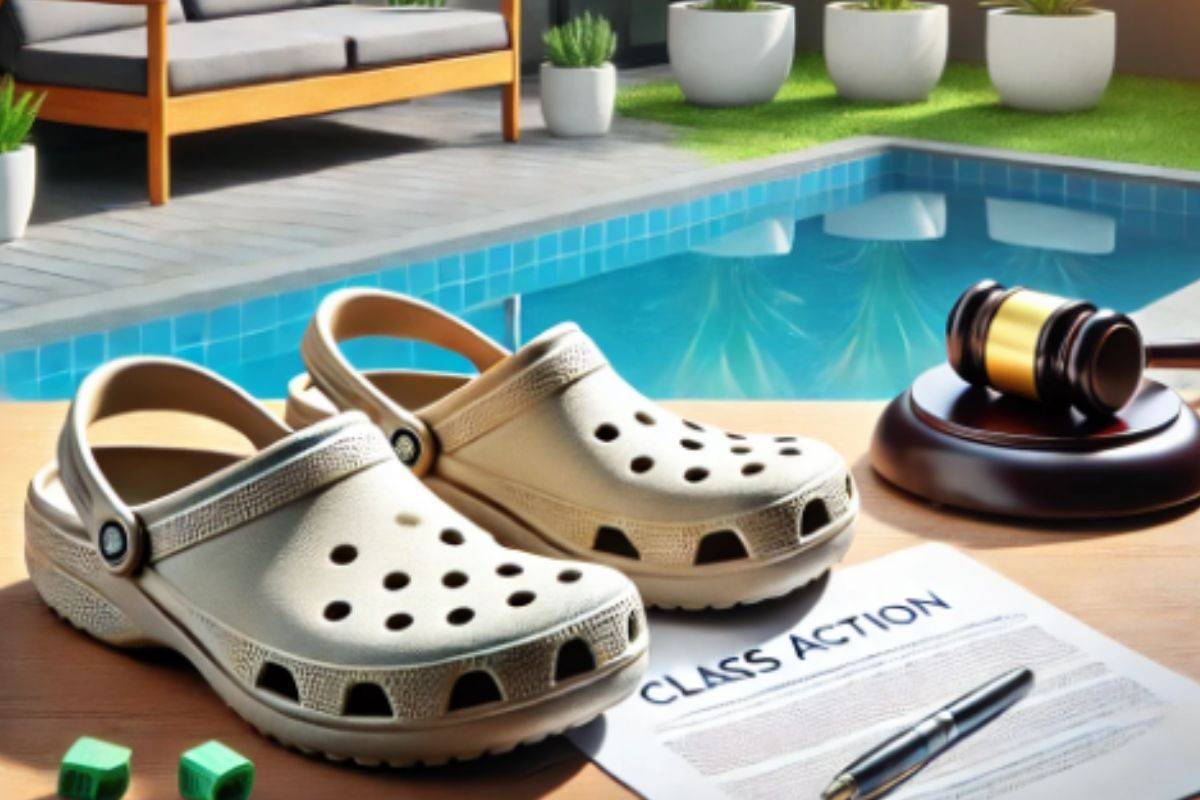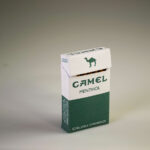The Crocs class action lawsuit has stuck the eye of many due to critical allegations in opposition to the agency. Consumers claim that Crocs footwear. Especially those made from the Croslite fabric, decreases appreciably while uncovered to warmness, sunlight, or water. This trouble has caused the filing of a category motion lawsuit, which has escalated into a major legal warfare. The lawsuit raises worries about deceptive advertising, faulty products, and ability violations of patron rights. In this text, we can explore the info of the Crocs magnificence movement lawsuit. The claims made in opposition to the business enterprise, the judge’s ruling, and what it can mean for customers.
What is the Crocs Class Action Lawsuit?
The Crocs class action lawsuit is a felony case filed in California. Where the plaintiffs argue that Crocs shoes shrink after being exposed to regular environmental situations. These shoes are crafted from Croslite material and are advertised as durable and suitable for outdoor activities. However, clients have reported that the footwear shrinks appreciably when exposed to warmth, daylight, or water, making them unwearable.
The plaintiffs in the elegance action lawsuit claim that Crocs has engaged in deceptive practices. The lawsuit in addition accuses the enterprise of false marketing, breach of warranties, and unfair enterprise practices. The plaintiffs argue that they had been misled into shopping merchandise that was no longer a match for anyone’s motives.
What Are the Specific Allegations Against Crocs?
Several key allegations have been made within the Crocs class action lawsuit:
Shrinking Shoes
The relevant claim is that Crocs footwear shrinks drastically when exposed to warmth, daylight, or water. Consumers who used the footwear in environments like beaches, swimming pools, or warm motors said that their shoes shrank in several sizes.
False Advertising
The plaintiffs argue that Crocs misrepresented their products in commercials. The enterprise marketed the footwear as outdoor and water-friendly footwear but failed to disclose that the shoes could shrink below those situations.
Failure to Recall Defective Products
The lawsuit claims that no matter the numerous court cases about the shrinking difficulty, Crocs refused to recollect the faulty merchandise or problem warnings to clients. The plaintiffs assert that the organization changed into being aware of the problem but selected no longer to behave.
Breach of Consumer Protection Laws
The plaintiffs allege that Crocs violated numerous consumer protection legal guidelines, including the Consumer Legal Remedies Act. By selling merchandise with defects, Crocs allegedly violated consumer rights by failing to provide accurate records and failing to problem a don’t forget.
The Background of the Crocs Class Action Lawsuit
The Crocs class action lawsuit emerged after many customers complained about their shoes shrinking after exposure to heat, daylight, or water. The trouble was particularly substantial in the company’s famous product strains crafted from Croslite fabric, such as sandals and mukluks.
Many purchasers offered Crocs shoes for outdoor activities, expecting them to be long-lasting and waterproof. However, when the shoes were worn at the seaside, close to swimming pools, or in warm environments, clients observed that the footwear would decrease dramatically. This illness made the footwear uncomfortable and unwearable, main to frustration and proceedings.
The plaintiffs argue that Crocs failed to inform clients about this defect in their advertising and marketing materials. They declare that Crocs knowingly misrepresented the quality of their products to boost sales, making the enterprise greater profitable while purchasers have been left with defective shoes.
Judge’s Ruling on the Crocs Class Action Lawsuit
U.S. District Judge Trina L. Thompson dominated in favor of the plaintiffs inside the Crocs class motion lawsuit, permitting the case to continue. The decision rejected Crocs’ attempt to have the case dismissed, determining that the allegations of product shrinkage had benefit.
Judge Thompson’s ruling was significant because it allowed the plaintiffs’ claims to move forward. The judge noted that the plaintiffs furnished sufficient detail about the timeline of their purchases and the classified ads they saw earlier than purchasing the shoes. This ruling also indicated that the lawsuit ought to cover multiple product traces, along with each sandal and mukluk, as they have taken into consideration similar phrases of purchaser harm.
Judge Thompson also decided that the issue of whether the footwear had been crafted from 90% or more Croslite materials might no longer be decided on the pleading stage. The plaintiffs’ claims have been deemed sturdy enough to proceed to in addition felony complaints.
What Are the Implications of the Crocs Class Action Lawsuit?
The Crocs class action lawsuit has large implications for the employer and its customers. If the lawsuit succeeds, Crocs ought to face excessive financial effects. The business enterprise may be required to pay damages to clients who bought the defective shoes, issue take into account, and take steps to save you destiny defects.
For customers, the lawsuit highlights the significance of being privy to product defects and expertise and their rights as customers. If you’ve purchased Crocs footwear that shrank after exposure to heat, daylight, or water, you’ll be eligible for reimbursement.
The case additionally raises broader questions about company responsibility. Companies have a responsibility to reveal ability defects in their merchandise, mainly if they pose a chance to clients. The Crocs magnificence movement lawsuit underscores the importance of client protection legal guidelines that maintain businesses liable for defective merchandise and false advertising.
How Did the Shrinking Crocs Issue Become a Problem?
The shrinking problem with Crocs footwear first came to light when consumers stated that their footwear would decrease after being exposed to certain environmental situations. Customers who offered Crocs for use at the beach, near pools, or in hot vehicles determined that the shoes might cut back several sizes, making them uncomfortable and unusable.
The lawsuit alleges that Crocs knew about this problem but did not cope with it. Despite a couple of proceedings and evaluations from clients declaring the shrinkage hassle, the organization continued to promote the shoes without issuing a warning or recall.
This problem is mainly tricky for consumers who depend on Crocs for outdoor sports, wherein the shoes are expected to resist warmth, daylight, and water. The failure to reveal the shrinkage disorder caused consumer dissatisfaction and, ultimately, the elegance motion lawsuit.
The Impact on Crocs and Consumers
The Crocs magnificence movement lawsuit can reshape the corporation’s enterprise practices and the way it markets its products. If Crocs loses the case, it may be pressured to issue a consideration and compensate affected customers.
For clients, the lawsuit provides an opportunity to preserve the employer responsible for defective products. If you’ve experienced issues with shrinking Crocs footwear, you’ll be entitled to repayment. Additionally, the case increases cognizance about the significance of transparency in product advertising and corporate responsibility.
FAQs
1. What is the Crocs class motion lawsuit about?
The lawsuit alleges that Crocs shoes cut back when exposed to warmness, sunlight, or water, making them unwearable.
2. Which Crocs merchandise is affected?
The lawsuit targets numerous product lines crafted from Croslite fabric, such as sandals and mukluks.
3. Why is Crocs being sued?
Crocs is accused of fake advertising and marketing, failure to reveal defects, and violating client protection laws.
4. How can I know if I am suffering from the lawsuit?
If you have Crocs footwear that shrank after exposure to warmness, sunlight, or water, you’ll be part of the magnificence action.
5. What may want to happen if the plaintiffs win the case?
If the lawsuit succeeds, Crocs may be forced to recall the faulty products, compensate affected purchasers, and pay consequences.
6. How can I document a declaration within the Crocs magnificence movement lawsuit?
Consumers who are part of the class action may also need to contact the regulation organization representing the plaintiffs for instructions on a way to be a part of the lawsuit.
Conclusion
The Crocs Elegance action lawsuit highlights huge issues regarding product defects and corporate responsibility. If the plaintiffs prevail, Crocs may be required to recall defective footwear, compensate purchasers, and make changes to its product traces. For customers, this situation serves as a reminder to be vigilant about product defects and to assert your rights as a client.
Whether you’ve had a terrible enjoy with shrinking Crocs. And if you are worried about the organization’s practices, the Crocs class movement lawsuit may have an enduring impact on the shoe enterprise and patron protection laws.












